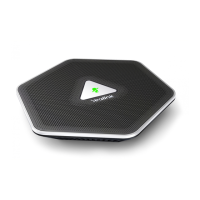Administrator’s Guide for Yealink VC110 Video Conferencing Endpoint
90
Static NAT
NAT enables communication between devices on your LAN that have private IP addresses and
devices that are accessed through a public IP network. Static NAT ensures that the same public
IP address always maps to an endpoint’s private IP address so that data from the public network
intended for the private endpoint can be routed to the endpoint reliably. If you are using static
NAT to associate a public IP address with the private IP address of your endpoint, you must
configure your endpoint to work with your static NAT server.
Note
Static NAT feature parameters on the endpoint are described below:
Specifies the static NAT type.
Disabled—the endpoint does
not use the NAT feature.
Manual—the endpoint uses the
manually configured NAT
public address.
Auto—the endpoint obtains
the NAT public address from
the Yealink-supplied server.
Default: Disabled
Remote Control
Web User Interface
Displays the NAT public
address automatically obtained
from the Yealink-supplied
server if the static NAT is set to
Auto.
Configures the NAT public
address for the endpoint if the
static NAT is set to Manual.
Remote Control
Web User Interface
Configures the route traversal type.
Auto—NAT works only when
making a call to public network
or receiving a call from the
public network.
Compulsory—NAT works when
If H.460 firewall traversal is enabled on the endpoint, the endpoint will automatically ignore the
static NAT settings for H.323 calls. For more information on H.460 firewall traversal, refer to on
Enabling H.460 Support for H.323 Calls on page 142.

